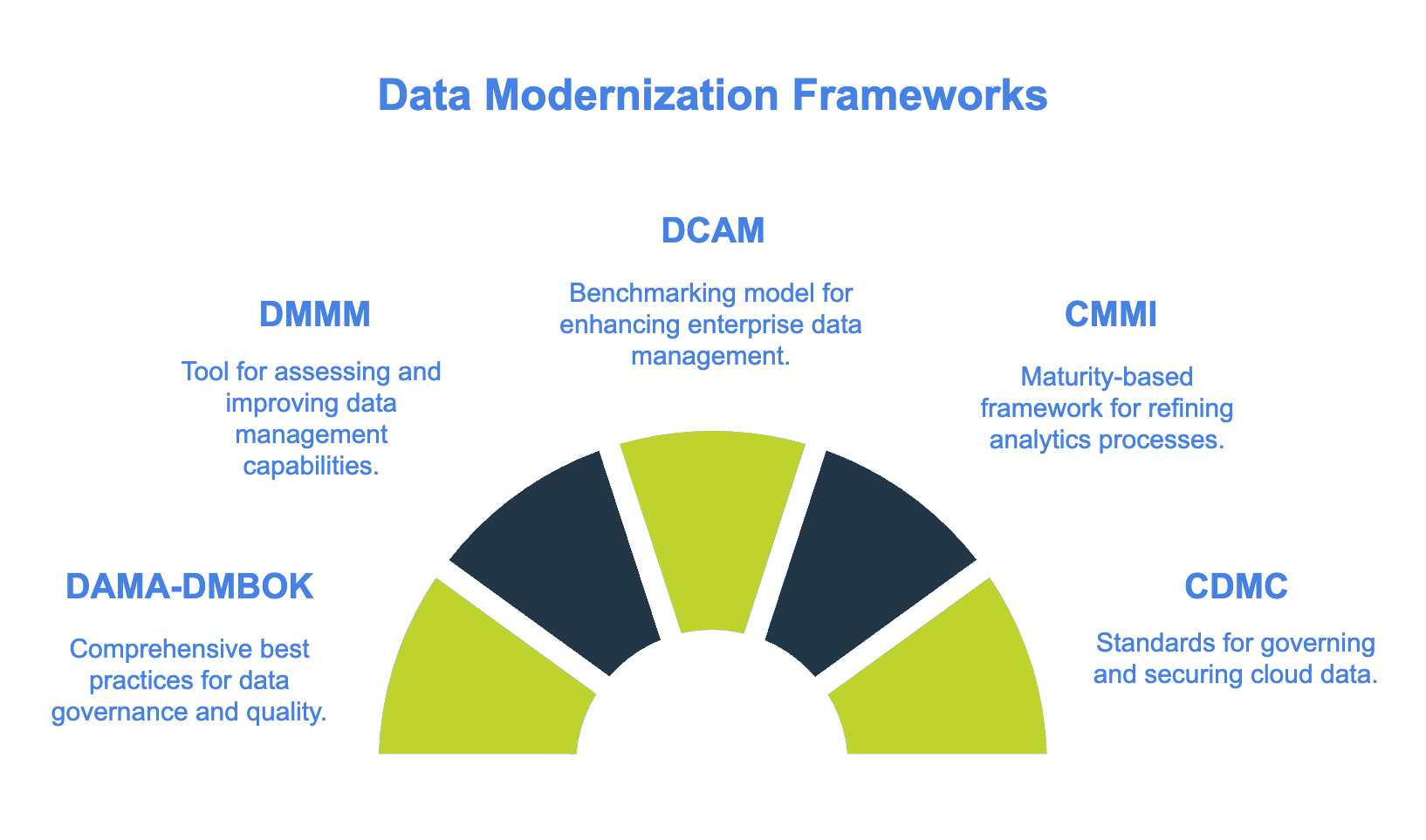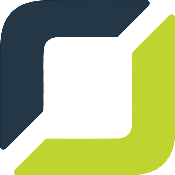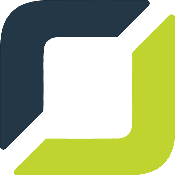According to Gartner, 64% of organizations are planning to increase investments in data modernization over the next two years, driven largely by the need for more agile decision-making and scalable solutions that handle ever-growing data volumes.* As companies move forward with these initiatives, leveraging well-established frameworks becomes a vital step to ensure consistency, operational efficiency, and measurable ROI. Rather than relying solely on guesswork or vendor pitches, organizations are increasingly turning to authoritative models that guide their data management strategies from start to finish.
A variety of recognized frameworks and maturity models exist to help shape your data modernization approach. Some of the most frequently cited include:
- Data Management Body of Knowledge (DAMA-DMBOK): A comprehensive set of best practices covering data governance, quality, architecture, and more.
- Data Management Maturity Model (DMMM): A tool that assesses your current capabilities and guides you through incremental improvements.
- Data Management Capability Assessment Model (DCAM): A model from the EDM Council, designed to benchmark and enhance enterprise data management capabilities.
- CMMI Data Management Model: A maturity-based framework that helps organizations refine processes for analytics and operations.
- EDM Council’s CDMC (Cloud Data Management Capabilities): Standards specifically tailored to governing and securing data in cloud environments.

While each of these frameworks offers tangible benefits, organizations often find it most effective to fully leverage one primary model before layering in others. By focusing on a single framework initially, you can build a strong foundational practice, then gradually incorporate additional guidance as your data maturity grows.
In this guide, we’ll give a brief overview of these frameworks, then take an expanded look at DAMA-DMBOK, one of the most widely recognized and comprehensive sets of best practices for data management. By understanding the core principles of DAMA-DMBOK, you can set the stage for more efficient data operations, improved data quality, and better alignment with your business goals.
Brief Overviews Of Leading Data Frameworks
Data Management Maturity Model (DMMM)
The DMMM evaluates an organization’s data management capabilities across multiple dimensions, such as data governance and data quality. It pinpoints current maturity levels and provides a roadmap for progression. By following DMMM guidelines, companies can identify quick wins and long-term strategies for improvement. For directors requiring tangible benchmarks, DMMM offers a clear, measurable path toward more sophisticated data operations.
Data Management Capability Assessment Model (DCAM)
DCAM, introduced by the EDM Council, focuses on assessing and strengthening enterprise data management strategies. With DCAM, you can measure operational excellence, data governance standards, and the overall alignment of data initiatives to business objectives. This framework helps establish clear baselines and supports ongoing improvement, making it ideal for organizations seeking to upgrade their data governance at scale.
CMMI Data Management Model
CMMI’s data variant applies the maturity model concept, familiar in software development, to data management. It provides structured levels of maturity to guide incremental improvements. By adopting the CMMI model, companies can methodically refine processes, ensure consistent data quality, and build trust in their analytics capabilities.
EDM Council’s CDMC (Cloud Data Management Capabilities)
As more organizations adopt cloud technologies, the CDMC framework helps them effectively govern data in these distributed environments. Cloud Data Management Capabilities outline standards for data security, lineage, metadata, and compliance in the cloud. This model is particularly relevant for companies making a strategic shift toward hybrid or fully cloud-based architectures.
Why Focus On DAMA-DMBOK?
While each of the above frameworks can play a valuable role in shaping a modern data ecosystem, DAMA-DMBOK often emerges as the go-to starting point. Compiled by the Data Management Association (DAMA), this framework draws from extensive industry input and real-world experience, making it a trusted authority. DAMA-DMBOK covers a broad range of data disciplines, ensuring that organizations have guidance no matter where they are in their modernization journey.
The following guides for Directors and Executives enable learning more about how to implement the different frameworks:
- Data Management Body of Knowledge (DAMA-DMBOK)
- Data Management Maturity Model (DMMM)
- Data Management Capability Assessment Model (DCAM)
- CMMI Data Management Model
- EDM Council’s CDMC (Cloud Data Management Capabilities)
Grounding Your Strategy In Proven Frameworks
Data modernization doesn’t have to be an uncharted journey. By leaning into established frameworks, DAMA-DMBOK, DMMM, DCAM, and others, you gain access to trusted roadmaps and industry-backed best practices. Each framework offers unique insights, but DAMA-DMBOK stands out for its comprehensive, time-tested guidance across all fundamental data management domains.
For IT Directors and business leaders overseeing large-scale modernization efforts, starting with DAMA-DMBOK can create a stable foundation upon which to layer other frameworks as your organization matures. By doing so, you’re not just modernizing your data infrastructure, you’re building a data practice that consistently delivers value, scales with organizational growth, and supports informed, confident decision-making.
Improving your data strategy starts with Orases. Get started by talking to an expert today.






